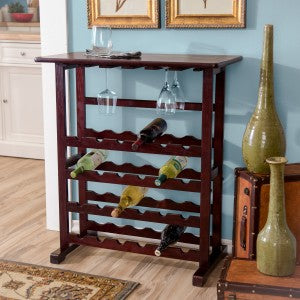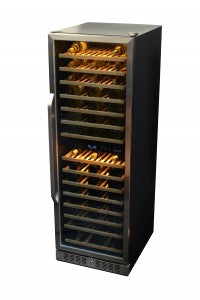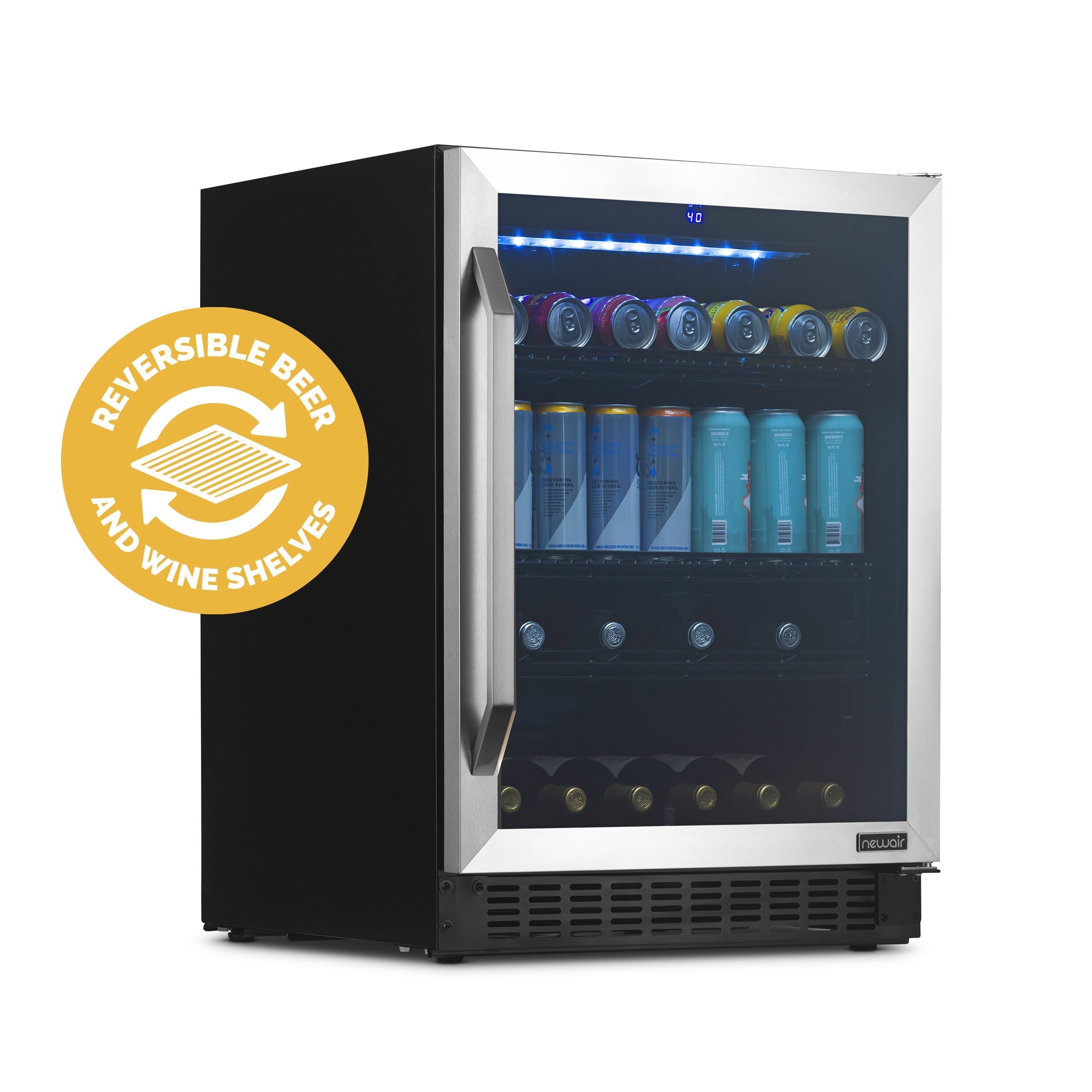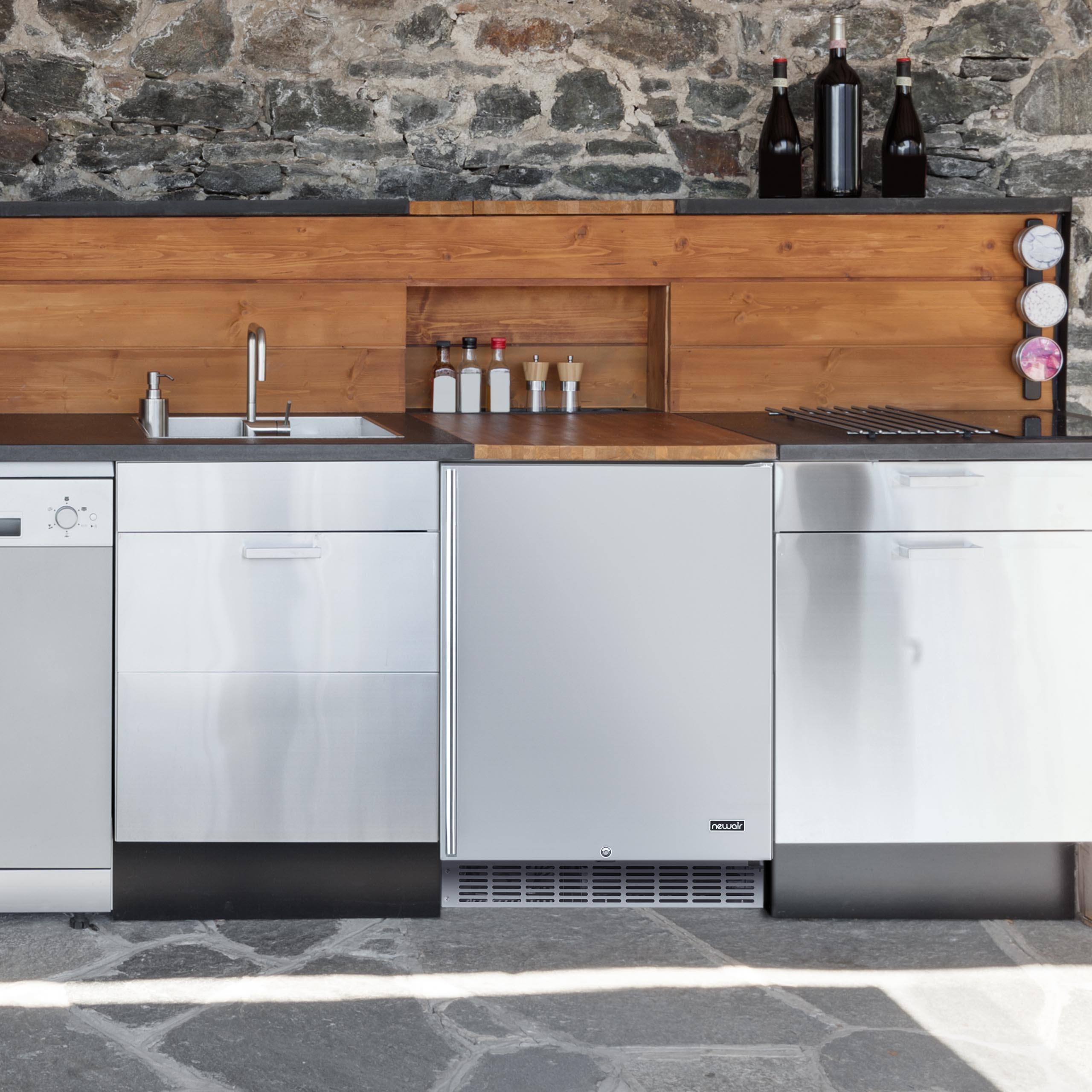What’s What in Wine Storage: Rack, Cabinet, Cellar or Cooler?
What’s what in wine storage?
Wine racks, cabinets, cellars, and coolers, oh my! These terms are often used interchangeably, to the point that what’s what in wine storage is utterly unclear. However, knowing the difference between these four types is crucial to determining what’s best for your collection. That’s why we’ve provided answers to all of your wine storage terminology questions below.
What do wine bottles need?
Ideal wine storage conditions include keeping the bottles out of direct sunlight and at relative humidity levels greater than 50 percent. Low humidity can cause the cork to dry out and become brittle. The bottles should also be kept in a space where the temperature doesn’t fluctuate more than 5°F, and that’s somewhere in the range of 40°F to 65°F. Finally, wine should be stored sideways, in order to keep the cork moist and prevent oxidation.
What’s a wine rack?

Wine racks are akin to shoe racks in terms of structure. These racks generally feature an open-face front, back, and sides, with several shelves for storing and organizing wine. In other words, a wine rack is a simple, linear structure for laying bottles on for display purposes and easy access. Racks can be wall-mounted, but are more often free-standing units placed in dining and cooking areas.
The majority of wine storage racks are constructed from woods such as redwood, pine, mahogany, and cedar. Certain types of woods are better than others. For example, mahogany is highly durable, can be stained, and will not warp in high humidity levels. The racks can be purchased with or without a stain/finish, with the latter allowing for a more DIY approach to wine storage.
Wrought iron and stainless steel are also popular choices for wine racks. These metallic materials will last awhile and can be more easily manipulated into complex designs than wooden racks. Stainless steel wine racks are frequently used in kitchens, as a complement to other appliances with the same finish, and because stainless steel resists both staining and corrosion. Racks made out of other metals and plastic are available as well.
Wine racks can hold anywhere from 1 bottle up to 160 bottles, or even more. However, popular capacities are 6, 8, and 12 bottle models, with these smaller sizes ideal for placement on the counter, by the dining room table, etc. Some wine racks are stackable, allowing for as much storage as needed. The shelves on wine racks generally have notches, curves, or indents for nestling wine bottles securely within, and most are designed to fit 750 mL size bottles. As such, anyone with a collection of large format bottles should double-check the wine rack’s size compatibility before purchasing.
Why are racks not good for wine storage?

While wine racks are functional in the sense that they allow you to concentrate a wine collection within one, easily accessible location, they’re focused on aesthetic appeal rather than proper wine preservation. A quick review of “wine racks” sold from major retailers reveals an incredibly diverse selection of designs, from ones evoking old French quarter structures, to others with a classic “C” design, to abstract, geometric confabulations. This is because a wine bottle rack is really just an ornament that should be selected in relation to a home’s existing decor.
Although beautiful, wine racks provide no temperature or humidity control for wine. They are simply a storage accessory with no protective qualities. And because the focus is on appearance and presentation of bottles, oftentimes, wine racks are placed in high-traffic, open areas, such as kitchens and on counters. These areas usually get hit with a lot of sun, exposing the wine bottles to direct light every day, with the UV rays prematurely aging the wine.
Furthermore, the chemicals in certain stains and paints on the wood racks can seep in through wine bottle corks, affecting the wine flavor. This is why wine racks by themselves should be primarily used for storage of inexpensive, ready-to-drink wine. If you have prized vintages, a wine rack in the kitchen is not a good choice at all. It is a good choice if you want to spice up the decor of a room with a unique design and an organized showcasing of a few wine bottles.
What’s a wine cabinet?
A wine bottle cabinet is the sturdier, more inclusive sister of a wine rack. These “wine furniture cabinets” are reminiscent of a regular cabinet you might find in a living room, which is defined by Cambridge Dictionary as a: “a piece of furniture with shelves or drawers that is used for storing useful things or showing decorative things.” Unlike racks, wine cabinets will generally have doors, side panels, and storage space for other miscellaneous objects, while also providing rack/shelf space for wine bottles.
For example, many wine cabinets have room for stem glassware and a drawer for accessories such as corkscrews, bottle stoppers, and more. Thus, a wine cabinet generally functions as a go-to storage space for a home’s wine-related collection. These pieces of furniture can act as a type of bar in the living room, with the countertop of the cabinet functioning as a serving area.
Keeping in line with their status as a substantial piece of furniture, the vast majority of wine cabinets are manufactured from wood, with various finishes. The cabinets are heavier and less portable than wine racks, and will generally take up more room, while offering less dedicated space for wine bottles. Most wine cabinets hold from 10 to 25 bottles, with only a few offering a 50+ bottle capacity. However, in contrast to wine racks, wine cabinets often have bigger cubbyholes for bottles, making them a better solution for larger wine bottles.

What’s the problem with wine cabinets?
Many of the storage problems with a wine rack carry over to a wine cabinet. A wine cabinet offers no regulated temperature or humidity control: it’s simply a large piece of furniture used for stowing wine bottles. The only advantage cabinets have over racks is that the doors can keep sunlight from directly hitting the bottles. Otherwise, this piece of furniture is more functional as an organizational storage and entertainment space, than as a product that can provide proper wine bottle storage.
What’s a wine cellar?

A wine cellar is often confused with a wine cooler. We’ll get to the latter farther down, but first, it needs to be clarified that a wine cellar is an actual space in a building geared towards long-term wine storage. Wine cellars are not portable like wine racks or cabinets; they’re rooms, usually below-ground, that are specifically designed to protect wine from light, low humidity, and heat. If you were to try to move your wine cellar into the living room, the whole house would collapse.
Most people aren’t lucky enough to have a natural cool, dark cave on their property, so the majority of wine cellars have to be purchased, installed, and operated through a climate-control system. These spaces will generally be insulated, with components such as seals, humidifiers, and more, all of which work together to keep the temperature and humidity at optimal levels for the type of wine being stored. Wine cellars age wine to perfection and, as you can guess, installing one can be quite expensive.
Wine cellar storage usually includes high-capacity, 100+ wine bottle racks constructed from wood. These wine racks can reach from the floor to the ceiling, and are installed directly against the walls. The type of wood used is even more important in a wine cellar, where the bottles are intended to rest for long periods of time with as little disruption as possible. For example, while pine might be a suitable choice for a casual 6 bottle wine rack in the kitchen, it cannot hold up to the moisture in a climate-controlled wine cellar. In contrast, redwood has natural preservatives within it, allowing it to withstand high humidity levels.
Why is a cellar not a wine storage solution?
The biggest issue with wine cellars is that they’re just not a feasible option for most people. Any wine drinkers who live in the city won’t have the space to install a wine cellar, and even many homeowners don’t have a room that can be easily converted into a dedicated, climate-controlled wine storage area. If the space is available, having a wine cellar professionally installed is expensive, not to mention the subsequent maintenance. Wine cellars, while impressive, should really only be considered if the wine drinker has a substantial collection of, say, red Bordeaux and barbaresco that they’re seeking to age perfectly for 10-20 years. The bottom line is that wine cellars are all about stockpiling large quantities of premium wine at optimal conditions.
What’s a wine cooler?
A wine cooler or sometimes known as a wine bottle chiller, is, in essence, a hybrid of the previous three wine storage solutions: it’s a temperature-controlled cabinet with racks for wine bottles. In other words, a wine cooler is a portable, insulated appliance that allows for organization, display, and proper preservation of wine.
Wine coolers are also sometimes called wine refrigerators, precisely because they provide a perpetually cool space to store wine bottles. That means that the cooler has to be plugged in to work, just like a mini fridge or any other electric kitchen appliance.
There are two main types: thermoelectric and compressor wine coolers. Thermoelectric coolers operate quietly and with no vibration, but are more affected by the ambient temperature in the room where the cooler is situated. Compressor wine coolers are slightly noisier, but have a longer lifespan and are better at maintaining consistent temperatures.
Similar to wine cabinets, wine coolers can be designed with a wood exterior. However, most wine coolers feature black and stainless steel exteriors, resulting in a sleek-looking appliance that harmonizes well with other modern home devices. Thus, although wine coolers have greater functionality than wine racks and cabinets, they generally don’t sacrifice on design appeal to achieve this functionality.
The point of a wine cooler is to also show off the wine collection, and many have glass doors exactly for this purpose. High-quality wine coolers, such as the NewAir AWR-1600DB have triple-paned doors with smoke tinting to block light, a clear layer, and a UV protected layer, to ensure that the bottles aren’t exposed to the elements.
Wine coolers range in capacity from small, 6 bottle units, up to large models with room for around 160 bottles. The cabinet of the cooler houses a number of metal or wood racks for storing the wine horizontally. These racks can be pulled out for easy access to the wine bottles, and are often removable, which makes storage of larger wine bottles simple.
Some coolers offer humidity control, but most often, this can be regulated simply by placing a set amount of silica beads within the wine cooler, and using a hygrometer to periodically check that the relative humidity is at least above 50%.
By far the most important aspect of a wine cooler is its cooling ability. Each cooler will have a minimum and maximum temperature range that it can achieve and maintain, and some even have two separate temperature areas for storing different types of wines. For example, the aforementioned AWR-1600DB has dual temperature zones, with a set range of of 40°F – 50°F in the upper compartment, and 50°F – 66°F in the lower compartment.


Dual-zone coolers are ideal because they allow for storage of both reds and whites at their respective proper temperatures. The temperatures can also be adjusted independently in increments of one on units such as this, for small calibrations according to the outside temperature.
So why go with a cooler for wine storage?
In comparison with the three other wine storage options, a wine cooler is by far the best investment. While wine racks and wine cabinets may look nice, they expose wine bottles to heat, fluctuations in temperature, dryness, sunlight, and more. A wine cellar would combat these environmental problems, but isn’t a realistic solution for the everyday wine drinker. Wine coolers are fairly inexpensive, they look clean and modern, and they keep all levels of wine in just the right environment for the best taste and aging possible.




0 comments